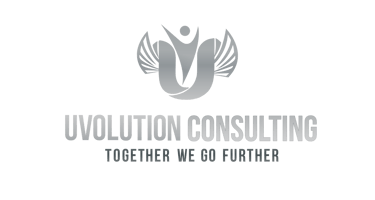Augmented, Not Replaced: Your 70/30 Workflow for Augmented Intelligence at Work.
Use AI without losing your edge. The 70/30 workflow that boosts speed, protects judgment, and ships decision-ready work starting today.
Omar Berrada
10/5/20255 min read


The moment it clicked
You open your laptop on Monday. A request lands: “We need the deliverables by 3 p.m.”
You feel prepared, until a teammate drops a polished draft in ten minutes. Not because they’re a genius but because they used AI. The question now is how do you stand out when everyone uses the same AI tools and all the output is getting uncomfortably too similar.
You know the terrain has shifted and the rules of engagement have now completely changed. The risk in this case that employees are facing is not “AI will take my job.” The real risk is slower, quieter: letting the tool think for you until your judgment dulls. Once that happens, confidence falls, and your work looks like everyone else’s. This guide treats AI as augmentation, not replacement, so your analytical thinking and critical thinking get sharper, not softer.
If you’re wondering how to design an AI workflow for professionals that keeps your edge, you’re in the right place! This article is the antidote. In the next few minutes, you’ll learn a simple, repeatable way to work with AI that protects your judgment, speeds your output, and builds compounding proof of value: the 70/30 workflow.
It connects directly to the core of my book “How to Stay Relevant When AI Is Changing Everything” as your real edge is the human layer: judgment, context, ethics, influence, and clear decisions. Tools amplify you only when that layer stays in charge.
So What is Truly The Issue Here?
This is the core of augmented intelligence at work: AI drafts and retrieves; you own judgment and outcomes. AI can draft, summarize, and format faster than you can. If you hand it the thinking too, your skills atrophy and your true value becomes, well, inexistent! You start shipping pages when stakeholders want decisions. You show activity when leaders need outcomes because you forgot that promotions follow the people who can decide, persuade, and reduce risk, not the people who produce the most words.
Over the next few review cycles, two things will separate careers:
Decision quality under speed: Drafting will be commoditized but decision clarity will not. (WEF Future of Jobs 2025 skills and McKinsey 30% automation by 2030 signals)
Trust: The people who can show their reasoning, trade-offs, and risk thinking will run the room. The rest will wait for instructions.
If you do nothing, you get a bit faster and a lot less distinct. If you act now, you build a visible moat: faster and more trusted.
The Turning Point: An AI vs. Human Judgment Moment
Two smart professionals get the same assignment: a comparative market brief.
Professional A pastes a massive prompt. Accepts the first output. Cleans prose. Sends. Stakeholders reply: “Helpful. What should we do?”
You use the 70/30 workflow. You keep the thinking. You let the tool draft. Your brief lands with one clear recommendation, three reasons, two trade-offs, and a one-line risk note. One slide tells the story, assigns an owner, and sets a date
Your email gets a different reply: “Proceed.” Then: “Join the decision call.”
Same tools but a much different operating system. That operating system is human skills AI can’t replace applied through a simple 70/30 workflow.
The 70/30 Workflow: A Step-by-Step AI Workflow (25 Minutes)
Goal: keep ~70% of the work in human judgment (purpose, context, decision, translation), and ~30% in AI drafting and retrieval. The ratio guards your craft and gives you speed.
Step 1: Map the task (5 minutes).
Pick one recurring task you touch weekly: status brief, options memo, customer insight summary, market research...
List its steps. Mark each H (human) or A (AI). Example:
H define purpose and decision
A draft baseline text from given inputs
A generate alternative views and risks
H choose a recommendation and weigh trade-offs
H add risk/ethics note
H translate to one executive slide (a true decision-ready slide)
Step 2: Run the loop (12–15 minutes).
Frame (H): Write two sentences: the decision and the limitations.
Generate (A): Ask AI for a tight brief with sources.
Counter (A): Ask for three counter-arguments and two edge cases.
Weigh (H): Choose one recommendation; list three reasons and two trade-offs.
Risk/Ethics (H): One line on fairness, privacy, or reputational risk plus mitigation.
Translate (H): One slide for the actual decision-maker: headline, expected impact, next action, owner, date.
Step 3: Annotate judgment (3-5 minutes).
Underline where your thinking changed the AI draft: a business problematic or limitation the model ignored, a flawed assumption, a stakeholder nuance. This proves your human layer is doing real work.
Step 4: Save the artifact (2-3 minutes).
Create a one-pager: before/after, minutes saved, errors prevented, and the final slide. File it. That’s evidence you can show other but that proves to you that your human judgment and experience when used judiciously will always give you an edge that AI cannot replicate.
The result?
You protect judgment: The most valuable part of your work stays with you.
You move faster: Drafting, summarizing, and formatting shift to the tool.
You earn trust: Every deliverable shows purpose, trade-offs, and risk thinking. Leaders can act without back-and-forth.
Responsible AI Use at Work (Security Guardrails)
Neutral inputs: Mask client names and sensitive numbers. Use placeholders. (responsible AI use at work keeps you and your company safe)
Approved storage: Keep outputs inside company-approved tools.
Two-minute reality check.
Are sources traceable?
Are numbers reproducible?
Is the time frame explicit?
Is there a credible counter-example?
Any fairness or privacy risk?
These habits keep you safe and help your org adopt AI with confidence.
A One-Week Plan with Compounding ROI
Day 1: Choose one task. Map H/A. Run the loop once. Save the artifact.
Day 2: Re-run the same task. Tighten your two-sentence frame. Reduce your prompt by 30%. Save the second artifact.
Day 3: Add a tiny improvement: clearer trade-offs, better risk note, or a sharper one-slide translation.
Day 4: Share the one-slide version with a stakeholder. Ask: “Is this decision-ready?” Capture feedback.
Day 5: Run it again and incorporate the feedback. File the third artifact.
Expected result by Friday: faster output and cleaner decisions on a real deliverable. You’ll feel the difference, others will notice it, and repeating this practice will bring compounding benefits for the weeks to come which will keep you ahead of the pack that seems to use AI as replacement intelligence versus you who now uses it as Augmented Intelligence.
Your very next step in five minutes
Open your calendar.
Pick one task due in the next 48 hours.
Draw the H/A line.
Run one 70/30 loop.
Save the before/after.
That’s it. You’ll feel the lift immediately. Keep the loop for four weeks and you won’t just be “keeping up with AI.” You’ll be the person people trust when speed and judgment both matter.
Future Proof Your Skills: How This Ties to Your Larger Success Story
In this AI at work era you want more than to just survive, you want to build the systems that will help you use these new powerful tools to thrive and multiply your contributions. The 70/30 workflow is a small gear that turns larger gears: clearer thinking, stronger influence, and credible speed.
It’s the daily practice behind How to Stay Relevant When AI Is Changing Everything. The book expands this into full play: critical-thinking drills, decision protocols, influence frameworks, and safe-use checklists that legal and security teams respect. You can download your FREE copy of the ebook HERE.
If you want a fast read on where you stand today and what to train next, take the Uvolution Leadership & Capability Index (ULCI) HERE in the funnel linked to the book. You’ll get a focused profile and a week-one upgrade plan.
Until next time, stay focused and irreplaceable my friends.




